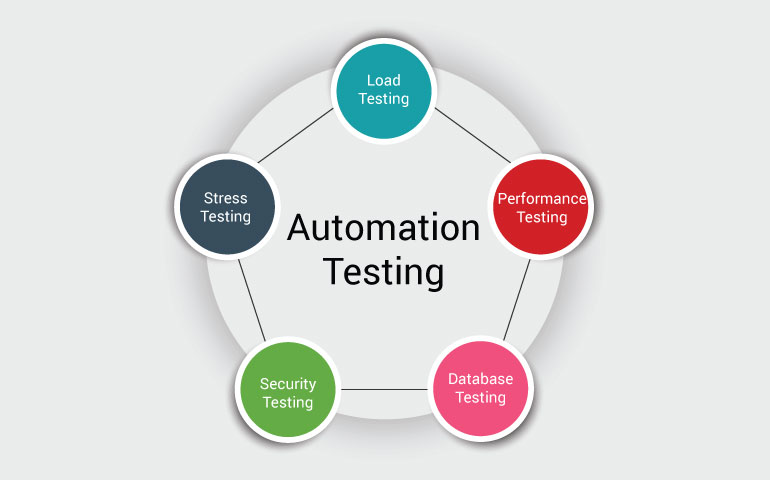Automation Testing Frameworks: Simplifying Complex Testing Scenarios
Automation Testing Frameworks: Simplifying Complex Testing Scenarios
Blog Article
From Guidebook to Automated Testing: A Comprehensive Overview to Transitioning Efficiently and Properly
In the world of software program screening, the shift from manual to automated processes has actually come to be an increasingly important shift for companies looking for to boost performance and precision in their testing practices. The journey from manual to automated testing is not without its difficulties, but when come close to strategically and with a clear strategy in mind, the advantages can be significant.
Advantages of Automated Checking
Automated screening uses countless advantages, improving effectiveness and accuracy in software application growth procedures. Automated examinations can be run at the same time on several tools and operating systems, drastically speeding up the testing phase compared to hands-on screening.
Additionally, automated screening guarantees a higher degree of accuracy in detecting problems. Given that automated examinations adhere to predefined scripts, human error is reduced, leading to even more dependable test results. Uniformity in testing is additionally enhanced, as automated examinations execute the same actions exactly each time they are run. This consistency is vital in making sure that all functionalities of the software application are thoroughly tested, reducing the chance of undetected bugs sliding with to manufacturing.
Picking the Right Devices

First of all, evaluate your needs and goals. Understand the scope of your task, the modern technologies involved, and the ability of your group. This analysis will help you identify the capabilities and attributes you call for in your screening tools.
Secondly, consider the compatibility of the devices with your existing processes and systems. Seamless integration with your existing software program growth lifecycle is necessary to make certain a smooth change to automation.
In addition, examine the scalability and versatility of the tools. As your testing requires progress, the tools should have the ability to adjust and fit changes properly.
Last but not least, consider the assistance and neighborhood around the tools. Robust support and an energetic individual neighborhood can supply useful sources and help when executing automated testing. By thoroughly considering these elements, you can select the right tools that align with your demands and set the stage for a successful shift to automated testing.
Composing Efficient Test Manuscripts

When crafting examination scripts, it is vital to consider the details demands of the software being examined and make sure that the scripts resolve all vital functionalities. Clear and detailed naming conventions for examination scripts and examination cases can boost readability and maintainability. Furthermore, incorporating mistake handling mechanisms within the examination scripts can aid in determining and dealing with concerns immediately.
Additionally, arranging test manuscripts into modular components can enhance reusability and scalability, decreasing redundancy and enhancing efficiency in test manuscript maintenance. Routine evaluations and updates to evaluate manuscripts are essential to maintain speed with advancing software program requirements and functionalities. By complying with these principles, testers can develop durable and efficient examination manuscripts that contribute considerably to the success of automated screening procedures.
Integrating Automation Into Workflows
Reliable assimilation of automation tools into existing workflows enhances and improves processes efficiency within software program growth cycles. When including automation right into operations, it is essential to determine repeated tasks that can be automated to save time and decrease human error. By perfectly integrating automated testing tools like Selenium or Appium into the software growth lifecycle, groups can attain faster responses on code adjustments, bring about quicker pest discovery and resolution. This assimilation permits constant screening throughout the growth procedure, making sure that any type of problems are determined early, causing greater software application quality. Additionally, automation can be used to cause examinations immediately after each code commit, providing prompt recognition and freeing up testers to concentrate on even more facility situations. Proper assimilation of automation devices requires cooperation in between development, testing, and procedures groups to establish a unified process that optimizes efficiency and effectiveness in supplying high-quality software.
Ensuring a Smooth Shift
Successfully transitioning to automated screening includes careful preparation and cautious implementation to optimize and lessen disturbances performance in the software growth procedure - automation testing. To make certain a smooth change, it is vital to start by conducting an extensive evaluation of the existing testing processes and recognizing locations where automation can bring the most significant benefits. Engaging with all stakeholders at an early stage while doing so, consisting of designers, testers, and task supervisors, is critical for amassing assistance index and buy-in for the automation campaign
Interaction is vital throughout this change stage. Clear interaction of the objectives, advantages, and assumptions of automated screening assists to handle any type of resistance or worries that might develop. In addition, giving ample training and sources for employee to upskill in automation tools and methods is important for making sure an effective shift.

Final Thought
Finally, transitioning from manual to automated testing provides many advantages, including enhanced performance and reliability. By choosing the proper devices, creating effective test scripts, and integrating automation effortlessly right into process, companies can make sure a effective and smooth shift. It is necessary to welcome automation as a beneficial property in software screening procedures to boost general high quality and efficiency.
In the realm of software screening, the change from handbook to automated processes has become an increasingly essential change for companies seeking to enhance efficiency and precision in their screening methods. Automated tests can be run simultaneously on numerous tools their explanation and running systems, considerably speeding up the testing phase contrasted to hand-operated screening. Uniformity in testing is also improved, as automated examinations carry out the same steps precisely each time they are run.To ensure the successful execution of chosen testing devices, the development of effective examination scripts plays a crucial duty in confirming the performance and performance of automated processes - automation testing. By adhering to these concepts, testers can create durable and reliable test scripts that add substantially to the success of automated testing procedures
Report this page